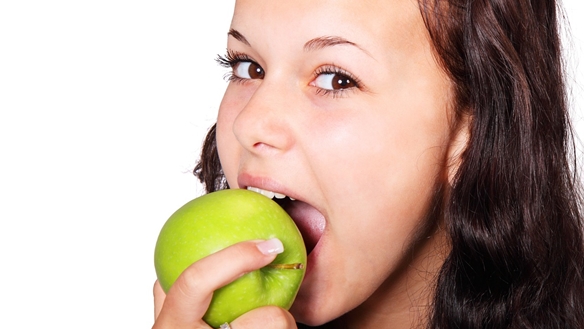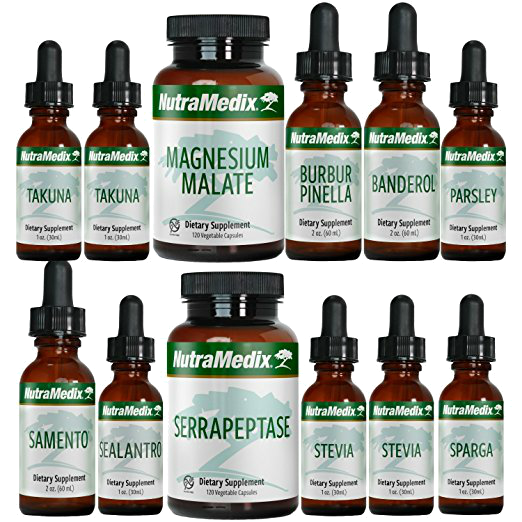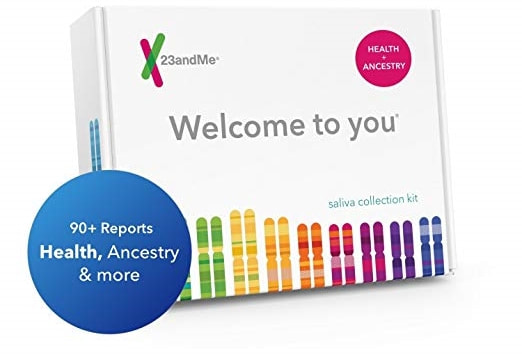Candida Diet: To Eat Or Not To Eat
July 8, 2014 in Lifestyle by Ashley Strommen
Candida is the secret battle many individuals with chronic disease suffer from. It’s uncomfortable, can be debilitating and quite difficult to get rid of. Men and women can suffer silently for years without knowing the proper protocol to abide by to rid themselves of the discomfort.
Candida is a type of yeast that lives in all of our bodies, but when immune systems become compromised the candida can grow out of control. As described by Liz Richards, creator of “The Candida Diet”, an overgrowth of yeast can be the result of antibiotic use, an impaired immune system, stress, oral contraceptives, chlorine and fluoride in water, a diet rich in refined carbs, alcohol, and sugar.
Because of this overgrowth, individuals begin experiencing symptoms that can vary from mild to unbearable. Candidasymptoms.net lists the following as warning signs of a Candida problem: acne, anxiety, headaches, intense food cravings, exhaustion, brain fog, irritability, allergies, stomach pains and bloating.
If you are currently suffering from any of these symptoms Dr. Amy Myers, a renowned leader in functional medicine, provides the following ways to get tested:
The most important element of ridding your body of Candida is abiding by what is known as The Candida Diet. The goal is to deprive the yeast of the foods it needs to grow. These foods include added sugar, fruit, starchy vegetables, caffeine, alcohol, and carbohydrates.
Foods to avoid while on the Candida Diet:
Foods to Eat while on the Candida Diet:
This may seem daunting at first, but enjoying a diet of fresh veggies and meats, with sides of quinoa, and snacks of nuts, yogurts, and dips becomes quite enjoyable. The stricter you are about following the diet to a T the quicker you will be able to reintroduce foods back into your body. Some individuals with less severe cases abide by the Candida Diet for a few weeks, while others need to restrict their eating for months. This protocol requires unwavering willpower, determination, and focus. It is incredibly difficult to refrain from eating foods that you crave, but the good news is the longer you abide by the diet, the easier it will get. You will create a routine, your pallet will begin to adjust, and you will kick those sugar and carb cravings that you once had.
Below is a sample Candida Diet plan that gives options for different meals for the day. The trick is to read nutrient labels while shopping and prepare meals at home. By making your own fresh food you will be confident in what is entering your body.
Breakfast on The Candida Diet:
Snacks on The Candida Diet:
When abiding by this diet one may encounter the dreaded die-off reaction. This can cause symptoms such as nausea, headaches, itchiness, or sweating. This is normal and it’s actually a good sign as it means the Candida cells are being killed. To mitigate these uncomfortable feelings, detox methods can be used. These die-off reducing methods include oil pulling, skin brushing, contrast showers, exercise, and sitting in an infrared sauna.
Choosing to not eat the restricted foods and beverages and only consuming the Candida Diet approved items is the best way to restore your health and alleviate if not eliminate the all-consuming symptoms you may be suffering from. To find more Candida Diet-Friendly recipes, visit http://www.thecandidadiet.com or http://www.illestoptimist.com. Your journey to better health starts now. By ridding your body of Candida you are restoring your immune system function and improving your digestion, which will in turn create the healthiest possible version of yourself. Stay strong, believe in your willpower, and you will begin to feel better than you ever knew possible.
Article Sources
Candida is a type of yeast that lives in all of our bodies, but when immune systems become compromised the candida can grow out of control. As described by Liz Richards, creator of “The Candida Diet”, an overgrowth of yeast can be the result of antibiotic use, an impaired immune system, stress, oral contraceptives, chlorine and fluoride in water, a diet rich in refined carbs, alcohol, and sugar.
Because of this overgrowth, individuals begin experiencing symptoms that can vary from mild to unbearable. Candidasymptoms.net lists the following as warning signs of a Candida problem: acne, anxiety, headaches, intense food cravings, exhaustion, brain fog, irritability, allergies, stomach pains and bloating.
If you are currently suffering from any of these symptoms Dr. Amy Myers, a renowned leader in functional medicine, provides the following ways to get tested:
- Blood test: check IgG, IgA, and IgM anti-body levels
- Stool test: analyze colon and lower intestine levels (the most accurate test)
- Urine test: detects if you have an elevated level of D-Arabinitol
The most important element of ridding your body of Candida is abiding by what is known as The Candida Diet. The goal is to deprive the yeast of the foods it needs to grow. These foods include added sugar, fruit, starchy vegetables, caffeine, alcohol, and carbohydrates.
Foods to avoid while on the Candida Diet:
- Sugars: sugar, honey, syrup, chocolate, molasses, rice syrup, and artificial sweeteners
- Alcohol: wine, beer, and hard alcohol
- Grains and Gluten: wheat, rye, oats, barley, bread, pasta, rice, corn and corn products
- Fruit: fresh, dried, canned, and juice
- Starchy Vegetables: potatoes, carrots, sweet potatoes, beets, peas, and parsnips
- Meats: pork, lunch meat, and smoked meat
- Fish: shellfish and all fish except for wild salmon and sardines
- Dairy Products: cheese, milk, cream, and whey products
- Beverages: coffee, black and green tea, diet and regular soda, energy drinks, and fruit juice
- Nuts: cashews, peanuts, and pistachios
- Beans: chickpeas, tofu, and all soy products
- Mushrooms and Truffles
- Condiments: ketchup, mayonnaise, mustard, horseradish, soy sauce, all vinegars except for apple cider vinegar
- Fats: peanut, corn, canola, and soy oil
- Additives, Preservatives, and anything processed
Foods to Eat while on the Candida Diet:
- Vegetables: artichokes, asparagus, avocado, broccoli, brussel sprouts, cabbage, celery, cucumber, eggplant, garlic, kale, olives, onions, rutabaga, spinach, tomatoes, and zucchini
- Fruit: green apples, lemon, and lime
- Live Yogurt: probiotic yogurt, kefir
- Meat: organic beef, chicken, lamb, and turkey
- Fish: anchovies, herring, sardines, and wild salmon
- Nuts and Seeds: almonds, coconut meat, flax seed, hazelnuts, pecans, sunflower seeds, and walnuts
- Non-Gluten Grains: buckwheat, millet, oat bran, and quinoa
- Herbs, Spices, and Seasonings: basil, black pepper, cinnamon, cloves, dill, garlic, ginger, oregano, paprika, rosemary, thyme, sea salt, lemon juice, coconut aminos, and organic raw unfiltered apple cider vinegar
- Oils: virgin coconut oil, olive oil, sesame oil, flax oil, and red palm oil
- Beverages: chicory root coffee, cinnamon/peppermint/ginger/licorice tea
- Sweeteners: stevia or xylitol
- There are also Candida fighting foods that assist in reducing the colonies of yeast that have invaded your body. Use these foods as often as possible: coconut oil, garlic, onions, seaweed, rutabagas, ginger, olive oil, lemon and lime juice, pumpkin seeds, and cayenne pepper.
This may seem daunting at first, but enjoying a diet of fresh veggies and meats, with sides of quinoa, and snacks of nuts, yogurts, and dips becomes quite enjoyable. The stricter you are about following the diet to a T the quicker you will be able to reintroduce foods back into your body. Some individuals with less severe cases abide by the Candida Diet for a few weeks, while others need to restrict their eating for months. This protocol requires unwavering willpower, determination, and focus. It is incredibly difficult to refrain from eating foods that you crave, but the good news is the longer you abide by the diet, the easier it will get. You will create a routine, your pallet will begin to adjust, and you will kick those sugar and carb cravings that you once had.
Below is a sample Candida Diet plan that gives options for different meals for the day. The trick is to read nutrient labels while shopping and prepare meals at home. By making your own fresh food you will be confident in what is entering your body.
Breakfast on The Candida Diet:
- Omelet: organic eggs, spinach, tomatoes, and onions, cooked with coconut oil and seasoned with sea salt, pepper, and basil
- Oatmeal: equal parts gluten-free oats with a splash of coconut milk, cinnamon, cocoa powder, sweetened with Stevia
- Parfait: Layer plain yogurt with green apples and walnuts
- Salad of spinach and kale topped with a dressing made from apple cider vinegar, olive oil, and mustard
- Salad of hard boiled eggs, cooked quinoa, tomatoes, and swiss chard, topped with a dressing of olive oil and lemon juice
- Grilled wild caught salmon with sweet potato fries and a side salad
Snacks on The Candida Diet:
- Chopped carrots and cucumbers dipped in guacamole
- Vegetable soup made with onions, leeks, carrots, zucchini, cooked in olive oil and mixed with veggie stalk then blended
- Fresh spring rolls made by filling rice paper wraps with hummus, spinach, cucumbers, and carrots
- Green smoothie made from green apple, spinach, lemon, and avocado, filtered water, and ice
- Peppermint tea
- Filtered water with slices of cucumber
- Green juice with green apple, celery, cucumber, kale, and lime
When abiding by this diet one may encounter the dreaded die-off reaction. This can cause symptoms such as nausea, headaches, itchiness, or sweating. This is normal and it’s actually a good sign as it means the Candida cells are being killed. To mitigate these uncomfortable feelings, detox methods can be used. These die-off reducing methods include oil pulling, skin brushing, contrast showers, exercise, and sitting in an infrared sauna.
Choosing to not eat the restricted foods and beverages and only consuming the Candida Diet approved items is the best way to restore your health and alleviate if not eliminate the all-consuming symptoms you may be suffering from. To find more Candida Diet-Friendly recipes, visit http://www.thecandidadiet.com or http://www.illestoptimist.com. Your journey to better health starts now. By ridding your body of Candida you are restoring your immune system function and improving your digestion, which will in turn create the healthiest possible version of yourself. Stay strong, believe in your willpower, and you will begin to feel better than you ever knew possible.
Article Sources
- Candida Symptoms: http://www.candidasymptoms.net/
- Dr. Amy Myers http://www.mindbodygreen.com/0-8376/10-signs-you-have-candida-overgrowth-what-to-do-about-it.html
- Lisa Richards, The Candida Diet: http://www.thecandidadiet.com/
About the author
Ashley's blog "Illest Optimist," details her quest to recover from Lyme using a strict nutritional regimen, natural treatment protocols, and constant detoxification.
Website: http://illestoptimist.com/;
Facebook: https://www.facebook.com/illestoptimist; Twitter:@AshleyStrommen
LinkedIn: https://www.linkedin.com/pub/ashley-strommen/27/16a/472
Website: http://illestoptimist.com/;
Facebook: https://www.facebook.com/illestoptimist; Twitter:@AshleyStrommen
LinkedIn: https://www.linkedin.com/pub/ashley-strommen/27/16a/472
latest posts
tags
Disclaimer: The information on this website is not a substitute for professional medical advice.
Always consult with your treating physician before altering any treatment protocol.
Always consult with your treating physician before altering any treatment protocol.








